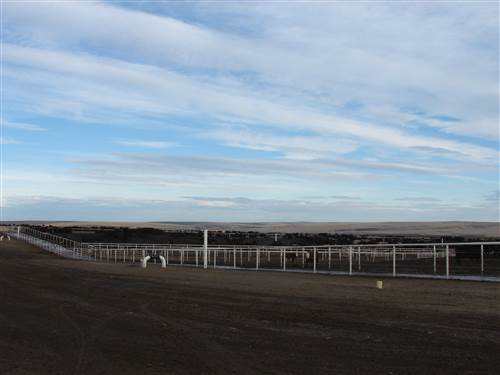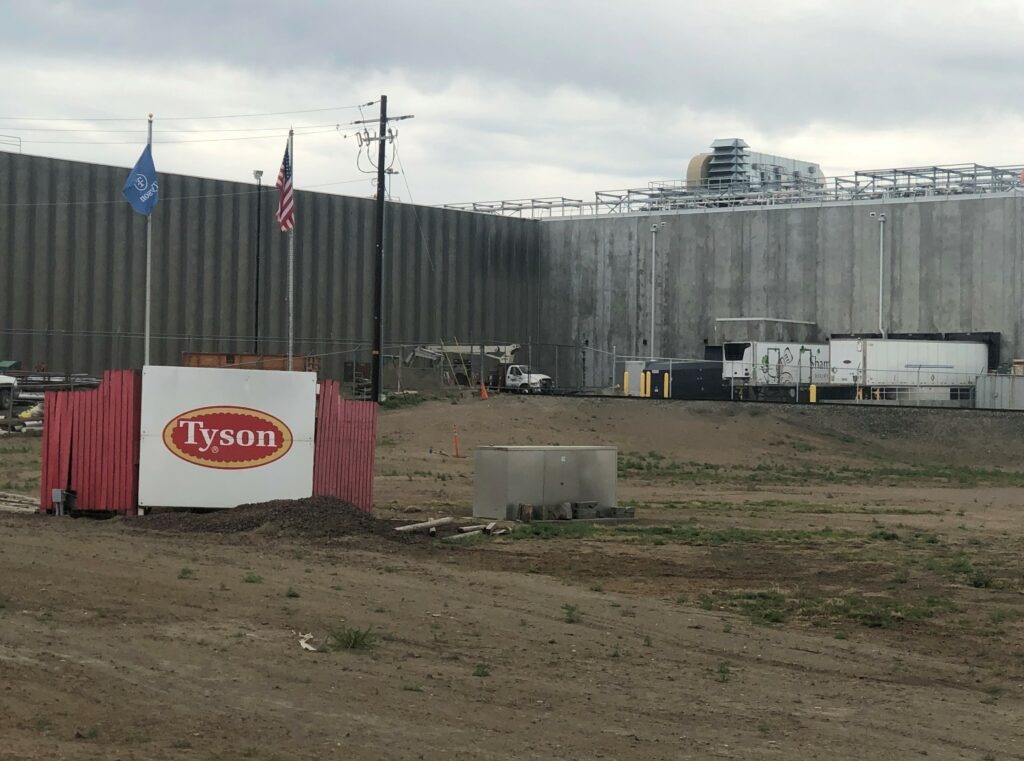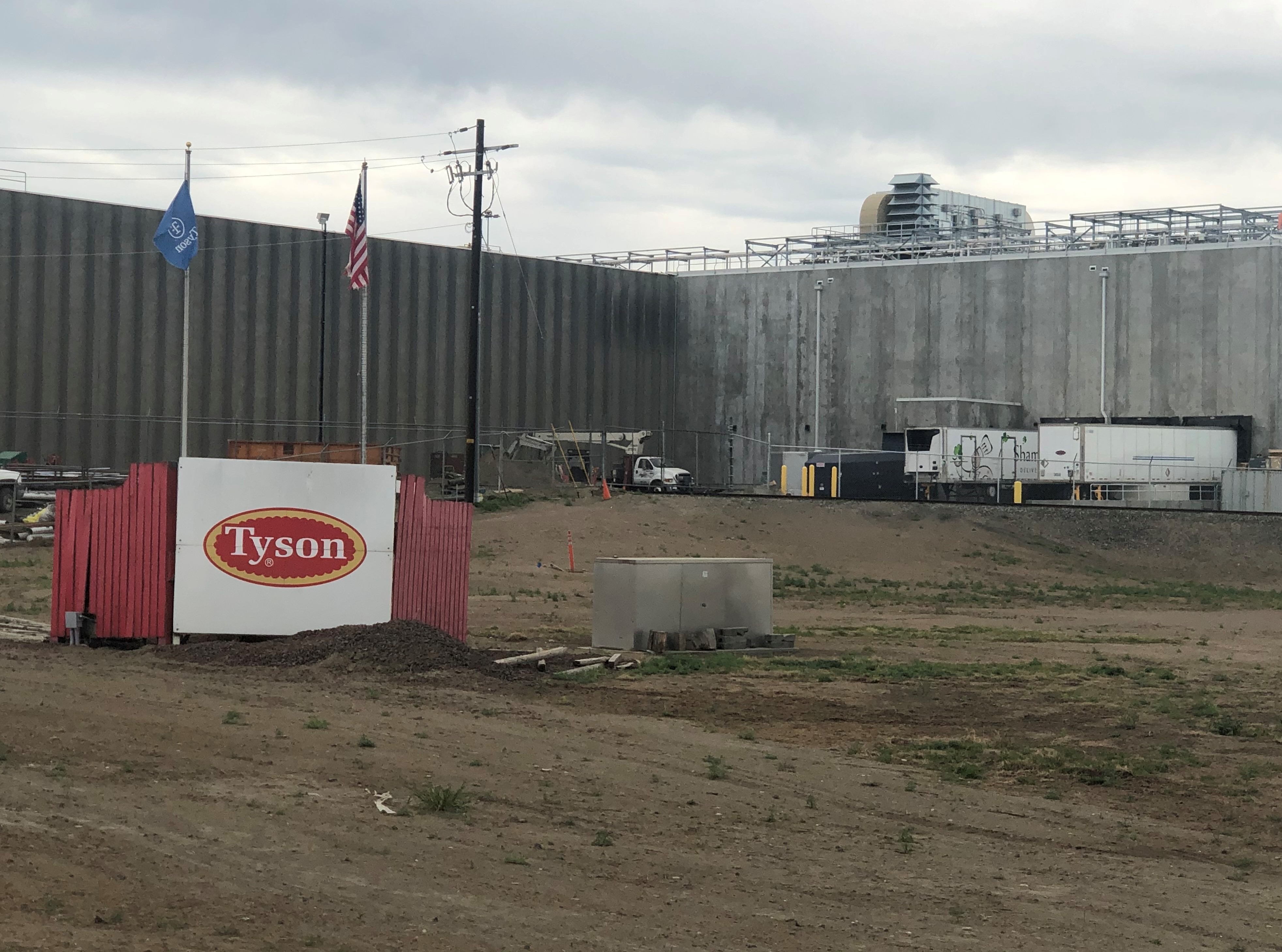
Easterday-Tyson Saga Shows: Counting 200K Cattle Isn’t Easy, Especially When They Might Not Exist
READ ON
Just how do you miss 200,000 phantom cattle over several years? That’s what some people in the Columbia Basin cattle-feeding industry are wondering in an ongoing saga between Tyson Fresh Meats and Easterday Ranches.
“It’s hard to believe,” says Mike DeTray, who runs a 4,000-head operation outside of George, Wash.
An accurate count of cattle is essential to cracking the case of Easterday Ranches and Easterday Farms — two arms of the large Easterday family empire, which Tyson Fresh Meats has accused of inventing and feeding 200,000 cattle on paper. After Tyson filed suit seeking $225 million, Easterday filed for federal bankruptcy.
ALSO SEE: What’s ‘Cattlegate’ About? Catch Up On Past Coverage
DeTray says it’s hard to hide cattle.
“There is no way Tyson should lose 200,000 head of cattle,” he says. “We’re a small operation — 4,000 animals. And the bank is here counting the cows once a year.”
Amber Itle, assistant state veterinarian for the Washington State Department of Agriculture, says every day on a farm there are animals coming, leaving, calving and dying. So there is no way for regulators to know how many animals are on any one farm on any one day. It’s hard to track.
“When you are talking about 50,000 animals you can see how easy it would be to get lost in the paperwork,” Itle says. “We’re talking about a lot of animals moving. That’s a lot of record keeping.”
Rustling: an old tradition that hasn’t died
There have been similar cases like the alleged Easterday scam. Jan Ostrovsky, a former U.S. Department of Justice trustee for the Northwest region, worked on a ponzi-scheme cattle rustling case in eastern Oregon about 20 years ago. Ostrovsky is now retired in Seattle. He says cattle rustling is an old craft. In the case he worked he was surprised at sometimes how unsophisticated the scam was.
“In that case there were checks kept in kitchen cupboards, informal transfers that you would not know about,” Ostrovsky says. “We also learned that cattle were very difficult to keep track of. If you go out to count cattle, they can be moved from field to field while you are traveling from field to field to count the cattle. Tomorrow we’re gonna count the cattle at X location, and that night you dump them all in a semi trailer and drive them over.”
They busted the scheme wide open when the outfit declared bankruptcy, and Ostrovsky looked for the cattle that were supposed to be there as part of the estate.
“We looked for the damn cows, and we didn’t find as many as they said that there were,” he says. “The breed association records showed that daughters were giving birth to their mothers. That’s a pretty good sign that something was going wrong.”
These days, cattle are usually counted several times by various parties and agencies. Itle, the veterinarian, says it’s just really hard to count cattle on the ground and on paper.
“When you’re at a concert can you estimate how many people are there?” she asks. “You could see how it could happen. Unless someone is there every day doing an inventory — I’m not sure you would notice.”
And few of those agencies are comparing numbers.
The ranch count
Galen Erikson says it’s surprising this alleged fraud could go on for several years. Erikson is a feedlot expert with the University of Nebraska. He says cattle would have been counted several ways on the feedlot itself, where it’s likely both paper and computer records were kept, as on most large-scale feedlots.
First, he says, the cattle were likely weighed and counted when they arrived at the feedlot.
Next, the cattle would’ve been tracked based on what section of the feedlot — what pen — they were put in. If there were any sick animals taken out, those animals also would have been tracked.
During their lifespan, the animals’ feed bills to Tyson would have been tracked. And Tyson alleges it was billed for Easterday’s fictitious beasts as they grew and “ate” more and more feed.
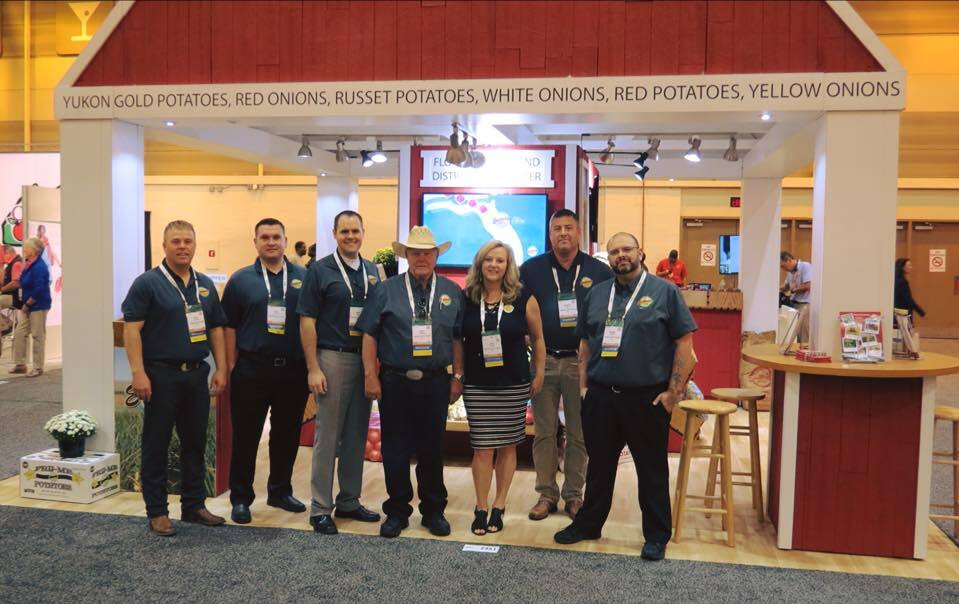
The Easterday family is known for growing potatoes, onions and beef cattle as one of the largest agribusinesses in the Columbia Basin of Washington and Oregon. Courtesy of Easterday Farms public Facebook page
“Usually those feed bills are billed monthly,” Erikson says. “If I had 500 head, and I sent you bills for that 500 head then nothing would catch [Tyson’s attention].”
Finally, as the cattle were moved to the processing plant after around 180 days, the fattened animals would have been weighed in groups again for a final count.
Erickson says to game all these systems at the same time would have been a sophisticated operation.
“Eventually they would have to produce the cattle,” he says. “I would think it wouldn’t take years to see the loss of that inventory.”
And alleged fraud on this scale is rare, he says.
“I can only think of a couple other [cattle fraud] cases that are much smaller,” Erikson says.
The Beef Commission count
The quasi-governmental Washington Beef Commission also counts cattle — several times over their typical life.
The commission charges $1.50 a head every time the cattle change ownership in the state.
The Beef Commission spends that money on things like beef promotion, research, education, nutrition, social media campaigns and national campaigns like the well-known “Beef — It’s What’s For Dinner” commercials.
Patti Brumbach, the state commission’s director, says the
cattle fees are broken up, with 50 cents going to the state, and $1 going to the national Beef Checkoff Program. This money is collected at about a dozen points of sale, like Tyson, which then automatically dumps money into the commission’s lockbox. The state collects fees from smaller producers.
The state Beef Commission ends up getting a count on every animal that changes ownership. But Brumbach says she can’t see the individual producers’ business — just the overall sales count.
“We receive collections from Tyson,” Brumbach says. “But we don’t see it broken out by suppliers [like Easterday].”
Brumbach calls the Easterday situation tragic.
“It’s important for the courts to sort out exactly what happened,” she says.
The doomed cattle count. (Hint: they’re not counted)
As it turns out, there is basically no individual tracking of animals destined to live less than 18 months.
“These animals are going into the slaughter channel,” says Amber Itle, the state veterinarian. “So they don’t have to meet all the requirements that breeding cattle would.”
She explains that breeding cattle need to be tracked because they might pose a long-term disease risk when they go back to the countryside. Most breeding animals do get tagged at birth, but the Easterdays’ business was all about the younger animals meant for slaughter.
Another problem is that animals can move from farm to farm and never have a trail of places where they’ve been. The feedlot might also retag the animal, stripping the tag from another farm or birth.
And when cattle arrive at the slaughterhouse, they get yet another tag that corresponds with its carcass. But it’s not required that a carcass number corresponds to a steer’s tag when it was live. The slaughter house is supposed to keep the live tag information if the animal had one.
“Here’s the kicker … all these cattle 18 months and younger, all these feedlot animals, are exempt from ID requirements, period, in the whole country,” Itle says. “It makes traceability almost impossible. I guess my point is, those animals at Easterday’s, I don’t know if they have official ID or not, but they would be exempt from all ID requirements. So there is no way for us to track individual animals.”
The state count
The Washington State Department of Agriculture is now reviewing Tyson reports and comparing them to the routine audits done by its Livestock Inspection Program staff at Easterday Ranches to determine whether there are any discrepancies.
“Like all meat processing operations in the state, Tyson Fresh Meats submits regular reports to WSDA’s Animal Disease Traceability Program with an accounting of the number of animals processed,” Hector Castro, a WSDA spokesperson, wrote in an email. “At the same time, the Livestock Inspection Program conducts monthly audits of all certified feedlots, including Easterday Ranches, reviewing their documents regarding the number of animals that enter their feedlots.”
The audits and numbers collected by the Livestock Inspection Program staff are done by the inspectors in person.
Castro says WSDA has begun work to compare these two data sources as part of an internal review.
“There is no specific timeline for when this review will be completed,” according to Castro.
The brand inspection count
Washington has about 20 brand inspectors fanned out across the state.
Brand inspection documents cluster cattle in larger groups, and only include descriptive information like color, sex, type of breed and who owns them, veterinarian Amber Itle says. There is no way to track an individual animal from birth through all of its moves to different locations. Because feedlot cattle aren’t required to have an official individual ID even when moved from state to state if they’re less than 18 months.
Robbie Parke manages the Livestock Identification Program for the Washington State Department of Agriculture.
ALSO SEE: What’s ‘Cattlegate’ About? Catch Up On Past Coverage
The closest brand inspector to the Easterday Ranches operations is based in Walla Walla. Parke says each time young cattle would have been delivered to Easterday Ranches feedlot, the Walla Walla brand inspector would have been present.
“The state brand inspector that works with Easterday’s has been a brand inspector for more than 25 years,” Parke says.
Cattle operators are required to provide copies of all the inspection documents on a monthly basis for all cattle received.
“It’s reams of paper,” Parke says. “Each month is a stack an inch thick. It’s a lot of stuff to look at.”
Easterday Ranches is a certified feedlot, meaning it holds a license to operate commercially from WSDA. Cattle from certified feedlots aren’t typically inspected when they’re taken to the slaughterhouse.
But when it comes to the alleged numbers the Easterday Ranches reflected to Tyson — 200,000 fake cows — Parke says the state has no involvement.
“The state has no knowledge or purview between business transactions between Easterday and Tyson,” he says. “We had no knowledge of that. If you were to ask me how many cows are standing on the Easterday lot right now, I couldn’t tell you. That’s not something that we keep, nor are we required to keep.”
Parke says he understands why some people are questioning how this could have happened.
“We’re still looking at it,” Parke says. “All I know is the numbers we received seemed consistent.”
Tracking groups of animals has its drawbacks beyond Easterday’s accounting issues. It can also hurt disease tracking.
In a case in South Dakota, three cattle with tuberculosis were traced back to 99 farms and several states. Itle says Canada and Mexico have more robust traceability than the U.S.
“In order to trade at the international level, that is what the consumer expectation is, is that we have animal disease traceability,” Itle says. “But in the United States, we have a lot of resistance to that from beef cow-calf producers.”
State Nutrient Management Program count
Chery Sullivan is the program manager for the state Dairy Nutrient Management Program. Simply put: She’s in charge of watching over cattle manure.
Sullivan says her program inspects licensed dairies and how they deal with their manure. And the state Department of Ecology doles out permits to concentrated animal feeding operations — known by the shorthand CAFOs — that have had problem environmental discharges or have voluntarily signed up.
But Sullivan says beef operations like Easterday Ranches weren’t permitted under that program. And they don’t have to be.
Only if a farm creates a discharge, and there’s a complaint, will the agencies investigate.
But state inspectors don’t count cattle on Washington’s about 300 dairies, as someone might expect. Even with the CAFO permits, state inspectors rely on the farmers to tell them how many head of cattle they’re dealing with. And they check to see that manure stored in lagoons and spread on fields adds up to the expected amounts — a sort of back-end engineering.
“We don’t count noses and tails,” Sullivan says. “We rely on the integrity of the producers to tell us their numbers. In the dairy nutrient management program, there is no one counting cows that I’m aware of.”
The feds’ count
The federal government’s USDA program counts cattle in every state, too. It uses a specific methodology to count cattle twice a year, in January and July.
“During the other months, all known feedlots from 16 states are surveyed,” a USDA report methodology says. “The 16 states account for approximately 98 percent of the cattle on feed in feedlots with capacity of 1,000 or more head.”
Washington is one of those 16 states. It’s a sort of animal census, but nobody from the federal government is going to every farm and counting every animal.
A spokeswoman for the USDA National Agricultural Statistics Service says the agency is looking at its numbers for Easterday Ranches.
But when asked what the numbers were for Easterday’s feedlot, the federal agency says those numbers are not public.
Related Stories:
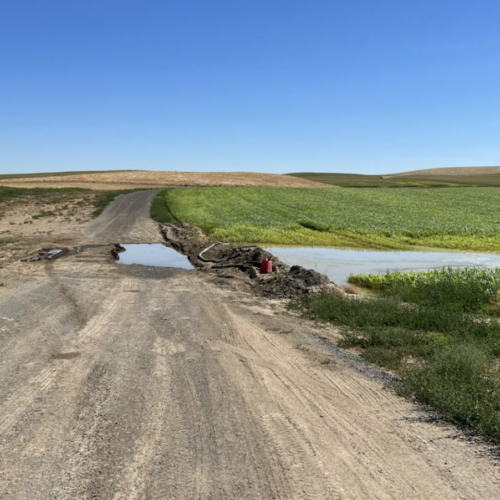
Controversial mega-dairy and farm under fresh scrutiny by Oregon officials
This photo from a Oregon Department of Agriculture report shows water runoff on a field. Runoff events, along with fertilizer leaks, have incurred violations for Easterday Dairy. (Courtesy: Oregon Department

Blue Christmas: Cody Easterday will likely spend his Christmas in federal prison
LISTEN (Runtime: 1:04) READ A big-time Northwest rancher has snatched himself a last two-week extension of freedom, before he goes into federal prison. Cody Easterday was due to report to

Cody Easterday sentenced to 11 years in prison for cattle fraud scam
The sentence that came down for Cody Easterday Tuesday concludes one of the biggest cattle rustling cases in the history of the West.

